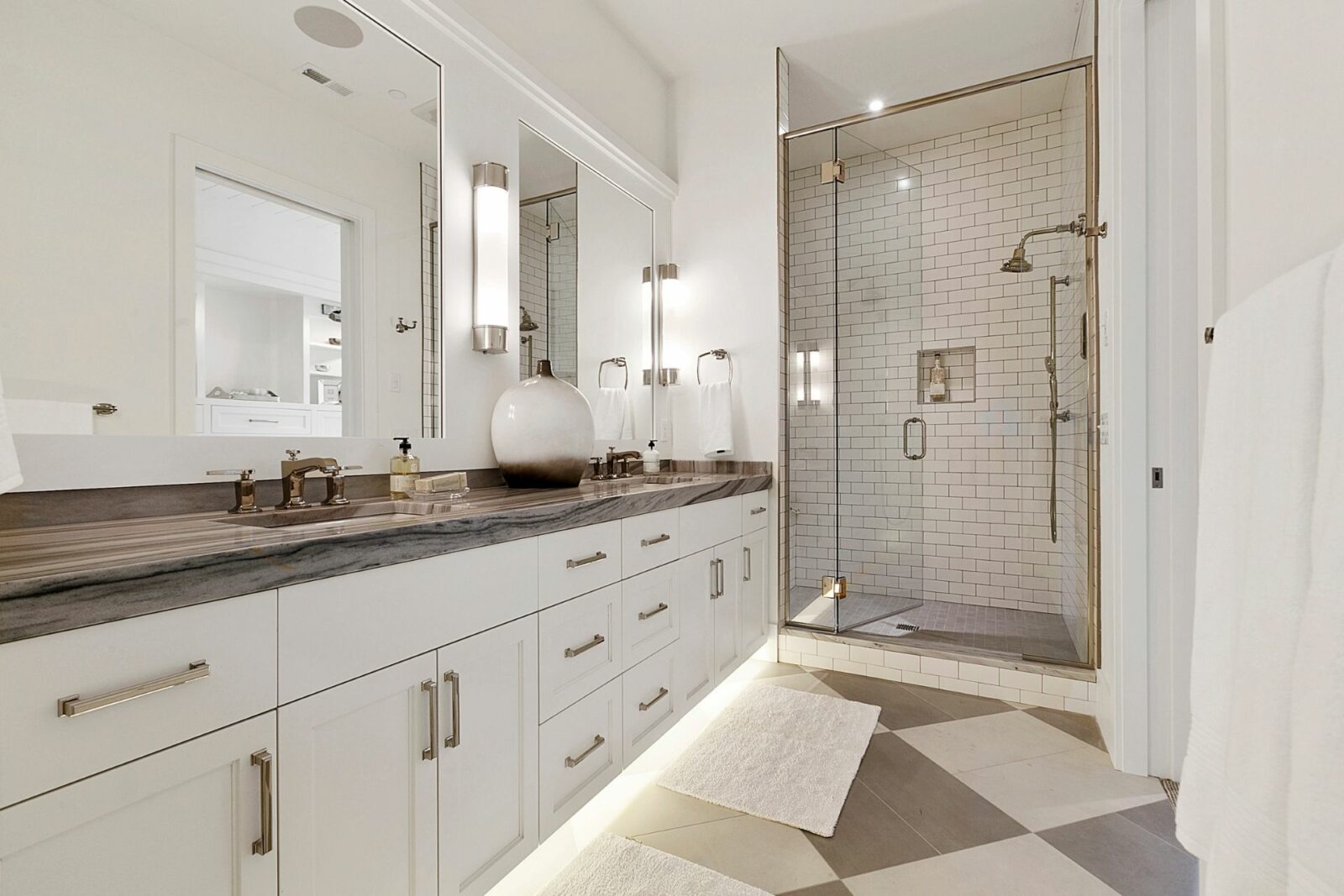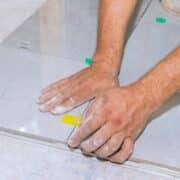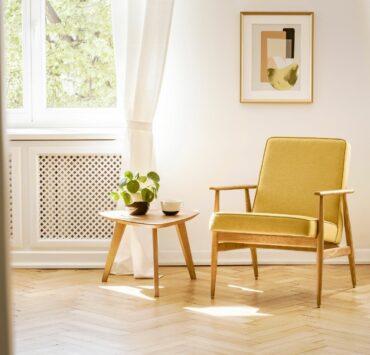Epoxy bathroom floor is hard to beat on all levels. Aesthetics, value, ease of installation, maintenance and durability all pass with flying colors.
Epoxy is a wonderful and affordable modern innovation that has opened up a whole new world of bathroom floor options. If you’re looking to update and renovate your bathroom floor, epoxy bathroom floor is an excellent option.
[ez-toc]Benefits Of Using Epoxy In Bathroom Floor
You Can Create Your Own Custom Aesthetic
Epoxy bathroom floors allow you virtually choose from infinite design options. Yes, you can select a wide array of design options from other bathroom floor material like tile or marble. However, the ease of epoxy flooring is as easy as painting it on.
Epoxy allows you to choose from virtually any color or create a custom mix of your own. The finish can mimic the look of marble, stone, glass, or even just a clean layer of paint. You can mix and match colors and choose how glossy or matte you want the finish to be. With epoxy as your bathroom floor material, the sky’s the limit.
Epoxy Floors Are Easy To Clean
Epoxy surfaces are naturally anti-bacterial, anti-fungi, and anti-mold. This makes using it in a bathroom, which is always prone to germ build up, especially ideal.
On top of the floors being naturally resistant to dirt and grime, when you do have to clean it, the process is very easy. Keeping epoxy bathroom floors clean is a straightforward matter. Simply mop it with a damp microfiber mop. You can add a touch of soap or all-purpose cleaner, but it isn’t necessary.
Epoxy Provides Water-Proof And Moisture Resistant Layer
It goes without explaining that the bathroom is subject to plenty of water and humidity. From shower steam, to water splashing, a wet bathroom is unavoidable.
With that said, it’s still important to protect the sublayers of your bathroom from constant moisture. This is where epoxy flooring is extremely beneficial. It protects your floors from moisture damage as the finish is highly waterproof. You don’t have to worry about mold or mildew forming on your floors or beneath them with a properly installed epoxy bathroom floor.
Lastly, the inevitable splash or spill on the floor poses no issue as it will just sit on top of it and not seep through.
Epoxy Is Chemical Resistant
Epoxy floors are highly non reactive. Like water, any chemical spills on the surface is a non issue as it simply sits on top.
Common bathroom items found in the bathroom like shampoo, nail polish, lotion, toothpaste, hair gel etc. are far from being harsh chemicals, but it’s good to know that any spills won’t cause discoloration or damage to such a flooring.
Epoxy Is Durable
A fallen hairdryer, dropped shampoo bottles or accidental glass breakage won’t damage an epoxy bathroom floor. The resin is highly durable. The durability of an epoxy bathroom floor will give you a clean, smooth and pristine looking floor for years to come, despite so much daily foot traffic.
Epoxy floors durability also gives you a cost effective flooring option. If installed properly, it’s unlikely you’ll need to spend on costly bathroom floor repairs. Issues like physical or chemical damage are virtually eliminated. And in the event that you need to repair an epoxy bathroom floor, a simple patch job that recoats and retextures a damaged area is all that’s needed.
Epoxy Is Easy To Apply
Opting for an epoxy bathroom floor is a quick and even DIY friendly process. Once the subfloor and primer are in place, adding epoxy to a bathroom floor is a matter of pouring on the resin and allowing it to cure. It’s very much like a paint job.
Unless you’re a savvy DIY’er, it’s ofcourse best to leave the installation to professionals. Poor installation won’t protect your floors from moisture damage and you may not achieve the finish you want.
Safety Tip: Add A Slip-Resistant Top Coat
Epoxy can look slippery, but it actually isn’t. When it comes to such a flooring, however, accidental slipping may be an issue. Epoxy bathroom floors, when wet, can become fairly slippery.
Ofcourse, any wet bathroom surface is slippery, so a degree of caution is always recommended. With epoxy flooring, you can add a slip-resistant top-coat as an added safety measure.
Adding Epoxy To Bathroom Floor
Adding epoxy to the bathroom floor requires starting with a clean, smooth, and level floor.
Whether your bathroom floor is initially made of concrete or tile, adding epoxy on top of it is a straightforward matter. You can also add epoxy on top of marble and vinyl. Read through the following steps to know what to expect when it comes to adding epoxy to the bathroom floor.
- Sand down bumps and fill in holes in the floor. Your epoxy finish will reflect the subfloor beneath it so ensure that it’s smooth and even. Any flaws will likely reflect in the finish.
- Use a silicone sealant or an acrylic adhesive to seal the perimeter of your bathroom floor. This protects your bathroom walls from epoxy seeping in.
- Mop the floor clean and allow it to dry completely. Adding epoxy on top of a wet or damp floor can cause unwanted mold or mildew growth in the subfloor.
- Add your primer.
- Prepare your resin by weighing and mixing it accordingly.
- Pour the resin in batches. Spread the resin out with a notched squeegee or a roller. You can use a hand spreader to get around any nooks and crannies such as underneath the sink and around the toilet.
- Allow the resin to cure before adding your sealant.
Epoxy bathroom floor combines aesthetic, functionality and affordability all into one. It’s one of the best bathroom flooring options out there. If you’re looking to upgrade the look of your bathroom floor, know that epoxy is probably the quickest and most efficient way to do it on all levels.








